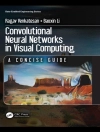This book presents select proceedings of the International Conference on Micro and Nanoelectronics Devices, Circuits and Systems (MNDCS-2022). The book includes cutting-edge research papers in the emerging fields of micro and nanoelectronics devices, circuits, and systems from experts working in these fields over the last decade. The book is a unique collection of chapters from different areas with a common theme and is immensely useful to academic researchers and practitioners in the industry who work in this field.
表中的内容
Semiconductor Device Physics.- Quantum Electronics.- Heterostructure Transport.- Compact Device Modeling.- Optoelectronics and Photonics: LED, LASER, IMPATT Diode.
关于作者
Trupti Ranjan Lenka is an Assistant Professor in the Department of Electronics and Communication Engineering, National Institute of Technology, Silchar, India. He received a B.E. degree in Electronics and Communication Engineering from Berhampur University, Odisha, in 2000, M.Tech. degree in VLSI Design from Dr. A. P. J. Abdul Kalam Technical University, Lucknow, in 2007 and a Ph.D. degree in Microelectronics Engineering from Sambalpur University, Odisha, in 2012. He was Visiting Researcher at Helen and John C. Hartmann Department of Electrical and Computer Engineering, New Jersey Institute of Technology (NJIT), Newark, New Jersey, the USA, in 2019, and Solar Energy Research Institute of Singapore (SERIS), National University of Singapore (NUS), Singapore, in 2018. He received Distinguished Faculty Award by NIT, Silchar, in 2019. He has supervised 10 Ph.D. and 19 M.Tech. students. He has published 90 journal research papers, 10 chapters, and 47 conference papers to his credit and delivered 15 invited talks. His research interests include nanoelectronics: III-nitride heterojunction devices (HEMT, NW LED), solar photovoltaics, energy harvesting using MEMS, and nanotechnology. Currently, he is handling 03 sponsored research projects funded by DST-SERB (ASEAN-India Collaborative R&D project), and CSIR-EMR-II on the development of high-efficiency perovskite solar cells, and Visvesvaraya YFRF by Meit Y, Govt. of India.Durgamadhab Misra is a Professor in the Department of Electrical and Computer Engineering, New Jersey Institute of Technology, Newark, New Jersey, the USA. He received the M.S. and Ph.D. degrees in electrical engineering from the University of Waterloo, Waterloo, ON, Canada, in 1985 and 1988, respectively. His current research interest areas are nanoelectronic/optoelectronic devices and circuits, especially in nanometer CMOS gate stacks and device reliability. He is a Fellow of IEEE and Distinguished Lecturer of IEEE Electron Devices Society (EDS), serving in the IEEE EDS Board of Governors. He is also a Fellow of the Electrochemical Society (ECS). He received the Thomas Cullinan Award from the Dielectric Science & Technology Division of ECS. He edited and co-edited over 50 books and conference proceedings in his field of research. He has also published more than 200 technical articles in peer-reviewed journals and international conference proceedings and delivered 125 invited talks. He supervised 20 Ph.D. students and 45 M.S. students.
Lan Fu received her Ph.D. degree from the Australia National University (ANU) in 2001 and is currently a Full Professor at the Research School of Physics, ANU. She is Chair of IEEE Nanotechnology Council Chapters & Regional Activities Committee, Associate Editor of IEEE Photonics Journal, and Member of Editorial Board of Opto-Electronic Advances. She is also a Member of the Australian Academy of Science National Committee on Materials Science and Engineering, Secretary of the Executive Committee of Australian Materials Research Society (AMRS), and Australian Research Council College of Experts. Her main research interests include design, fabrication, and integration of optoelectronic devices (LEDs, lasers, photodetectors, and solar cells) based on low-dimensional III-V compound semiconductor structures including quantum wells, self-assembled quantum dots, and nanowires grown by metal-organic chemical vapor deposition (MOCVD).












